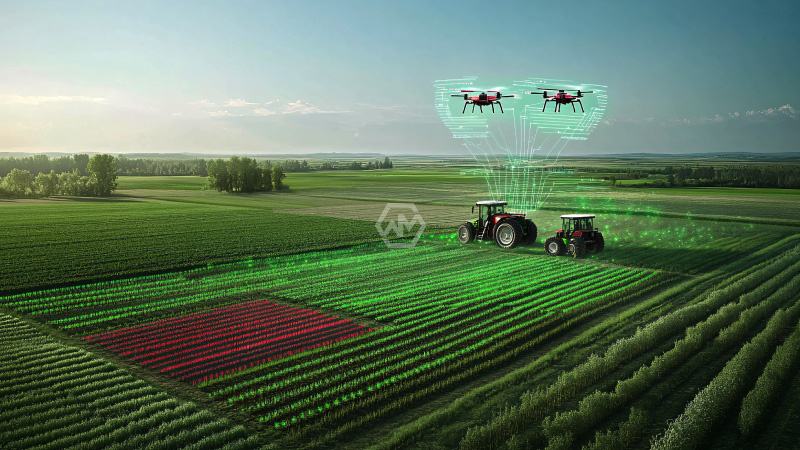- NISAR will provide high-resolution crop monitoring, tracking growth and soil moisture.
- Its dual-frequency radar will enhance accuracy in estimating crop production.
- The data will support farmers, policymakers, and food security planning.
NASA and ISRO’s NISAR satellite will revolutionize agricultural monitoring with its ability to track crops from planting to harvest. By using synthetic aperture radar, it will provide detailed insights into crop health, soil moisture, and biomass, helping farmers make informed decisions on irrigation, planting, and yield prediction.
With the capability to image nearly all land twice every 12 days, NISAR offers an unprecedented level of coverage. Its ability to monitor soil moisture will help manage water resources effectively, especially in regions prone to droughts or irregular rainfall.
NISAR: The Future of Smart Agriculture
NISAR’s dual-frequency radar technology will allow for precise crop identification and yield estimation. By integrating this data with existing satellite observations, researchers and policymakers can gain a clearer picture of agricultural trends, ensuring better management of food resources. This will be particularly valuable for nations reliant on agriculture, helping them mitigate climate-related challenges.
Farmers will benefit from real-time insights into soil and crop moisture levels, enabling them to optimize irrigation schedules and conserve water. This will be especially useful in drought-prone regions where water management is critical. Additionally, tracking crop growth cycles can help in predicting market supply and ensuring food availability.
Governments will use NISAR’s high-resolution imagery to track farmland changes and improve agricultural policies. By analyzing growth patterns and identifying stressed crops, authorities can better allocate resources, preventing potential food shortages. This will also aid in disaster response by assessing flood-affected farmlands and planning recovery efforts.
Beyond agriculture, NISAR’s capabilities extend to environmental monitoring, including deforestation tracking and natural disaster management. The satellite’s ability to measure soil moisture will also support climate studies, helping scientists understand land-atmosphere interactions and long-term environmental changes.
NISAR’s groundbreaking radar technology will provide farmers, policymakers, and researchers with invaluable insights into crop health, soil conditions, and agricultural productivity. By bridging the gap between technology and farming, it promises to enhance food security and resource management on a global scale.
“The discovery of agriculture was the first big step toward a civilized life.” – Arthur Keith



